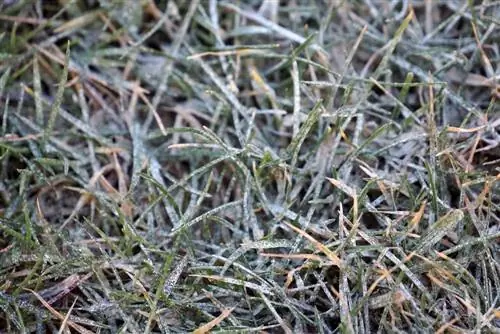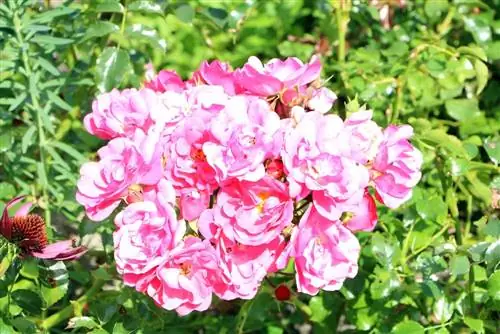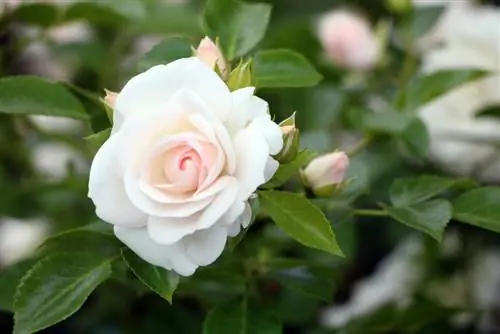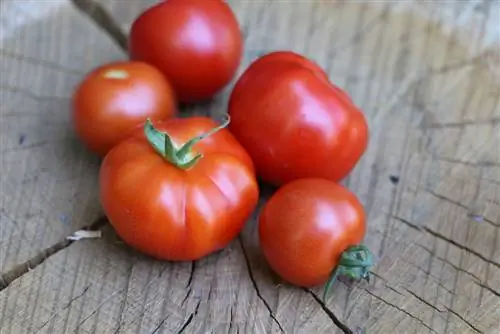- Author admin [email protected].
- Public 2023-12-17 03:39.
- Last modified 2025-01-24 12:45.
Rock dust is often associated with fertilizers, although it is not a fertilizer in the true sense. But it is still very valuable for your roses and the lawn, so regular application brings visible benefits. Below you will find interesting information about this substance as well as detailed expert instructions on how to apply it correctly to lawns and roses.
Product description
Rock dust is a ground material that is also available as this in gardening stores. It is sold as a small-grain product, which usually has a grain size of around 0.063 millimeters and therefore has a floury consistency, which is where the name comes from.
The primary rock powder is not available as a classic fertilizer, but is one of the soil additives.
Manufacturing
Primitive rock powder is usually obtained from the tailings of glaciers or volcanoes. The latter consists of a particularly large number of different minerals. A special process involving high energy consumption is used to break the rock into small pieces. Afterwards, during production, the grinding takes place in a so-called rock mill, where the end product is a fine powder and from which any coarse particles that may be present are sorted out by sieving.
Ingredients
It is usually made from bas alt and/or lava stone. Diabase, quartz as well as zeolite and phonolite can also be considered starting products. Granite is used less frequently. Exactly which components are present in the rock powder depends on what the starting product is. These in turn also influence the respective product properties and their suitability for different areas of application. Higher iron compounds can be found, for example, in lava flour than in bas alt or diabase rock flour.
But it mostly consists of silica, which usually accounts for around 80 percent of the substances it contains. Eight to 35 percent are usually covered by aluminum oxide and other minerals and trace elements, the most important of which, in addition to iron and silica, include the following:
- Magnesium
- calcium
- Potassium
- Molybdenum
- Manganese
The main nutrients, however, are only contained minimally or not at all, which is why this plant product does not fit into the range of conventional fertilizers.
Intended use
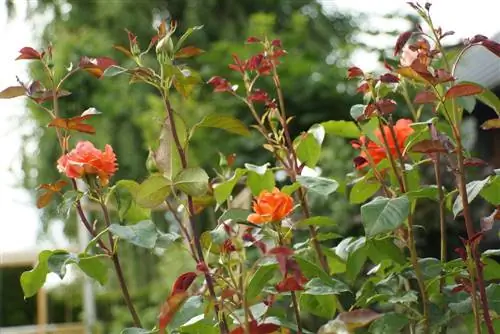
While classic fertilizers primarily act directly on the plant and provide an additional supply of nutrients, rock powders are aimed purely at the soil quality. Here they are able to improve/optimize this by enriching the soil area with mineral trace elements. Depending on the starting product, it is also used to increase the soil's nutrient retention. Rock powder can have a higher lime content and thus neutralize acidic soils. However, an increased lime content is less suitable for use on lawns or roses.
In humid regions, lava and bas alt powder have a positive effect on the storage capacity of nutrients and the formation of humus. It is mainly used by hobby gardeners who fertilize organically with plant manure. By adding primary rock powder, the otherwise strong smell is alleviated, which is particularly advantageous for vegetable beds near residential buildings or outdoor seating areas.
Effect
The effect of rock dust applied to the lawn or rose bed only becomes apparent over time if it has been used regularly over a longer period of time. Occasionally applying the primary rock powder to the soil of lawns or roses will have no visible effect. When using it on lawns and rose beds, it should be taken into account that different requirements sometimes exist. For this reason, there are special rock powder products for lawns and for roses, a conventional rock powder plant product can be used for particularly sensitive flowers. If long-term effectiveness is achieved, it ends approximately three years after the last application.
Tip:
Apply rock dust to the rose bed and/or lawn at least once a year. This is enough to extend the duration of the effect by a whole year, provided a sufficiently high dose is chosen.
Lawn
The components of a rock powder decompose slowly and therefore become available to plants just as slowly. On the lawn, the effect is expressed in dense and strong growth as well as a rich green grass color. This means that weeds have less and less chance of spreading through the lawn. Iron and magnesium, for example, minimize moss growth in the lawn.
Roses
In roses, the primary rock dust helps them to be more resilient and makes them more resistant to diseases. It also protects roses from parasites. If there is an existing pest infestation, it reduces parasite activity and helps increase the chance of recovery in the event of illness. The improved soil quality stimulates growth and ideally extends the flowering period.
Tip:
The finer the primary rock powder is ground, the quicker the effect occurs because the smallest particles get into the soil more quickly and can therefore take effect more quickly. When buying, always pay attention to a high level of fineness.
Dose and administration
Primitive rock flour is usually administered from spring to autumn. To continuously improve the soil quality and mineral and trace element supply, it should be added to the lawn and rose beds in small quantities every four weeks from spring onwards. The best place to start is before the fertilizing season, because the flour and its effect can help store the ingredients of fertilizers better in the same year.
There is no need to fear oversupply. Depending on the product, the dose recommended by the manufacturer varies. You can use this as a guide. The usual dose on calcareous soils is up to 150 grams per square meter. For acidic soils, the usual dose is usually between 200 grams and 300 grams. Heavy feeders such as roses and lawns can tolerate maximum doses.
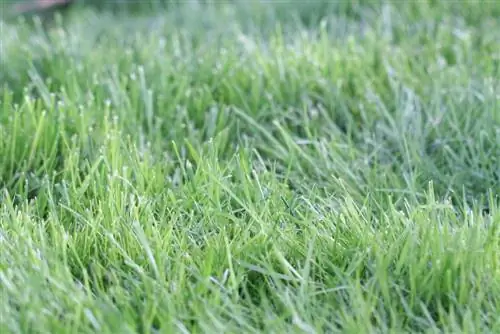
If there is an acute case of deficiency symptoms, weeds, pests or fungal diseases, the dose should be increased and the doses increased to once a day. The administration must be done in combination with plenty of water, as rock powders depend on this for their decomposition, which must take place before they can spread their effect.
Applying
You have various options to choose from when distributing primary rock powder for roses and the lawn:
Roses
- Sprinkle the flour over the bed and roses by hand - recommended in case of pest infestation or for prevention
- Mix with water and add to the soil as irrigation water - also suitable for spraying in case of pest infestation
- When planting, if necessary, add compost to the soil, well distributed
- Spread flour on the soil around the rose and water so that it soaks in
- It can be added when making other organic fertilizers such as nettle manure
Lawn
- Cut and scarify the lawn before spreading
- Distribute primary rock powder evenly over the lawn care area by hand or with a fertilizer cart
- Then water the lawn - this can be avoided if it rains soon
- Spread the lawn seeds over the surface of the soil
- Work into the upper soil area before laying turf
Buy
There are countless different rock powder products available in specialist retailers. It is often not easy to decide on the right thing. Basically, as already mentioned before: only use rock dust that is specifically suitable for lawns and products for sensitive plants for roses in your meadow. Most types of roses are sensitive to lime, so you should pay attention to a low calcium content when buying. Prices can vary greatly. It may be worth comparing prices here, because despite a potentially large price difference, the same ingredients in a similar composition may well be present in products of different price ranges.
You can use one euro per kilogram as a guide. The rock powder is available in 2.5, 5 and 10 kilogram bags/packs. However, lava rock powder is usually a bit expensive. But the extra expense is worth it, especially for the lawn, as it has one of the highest iron contents and is therefore ideal for the needs of a well-groomed looking lawn.

